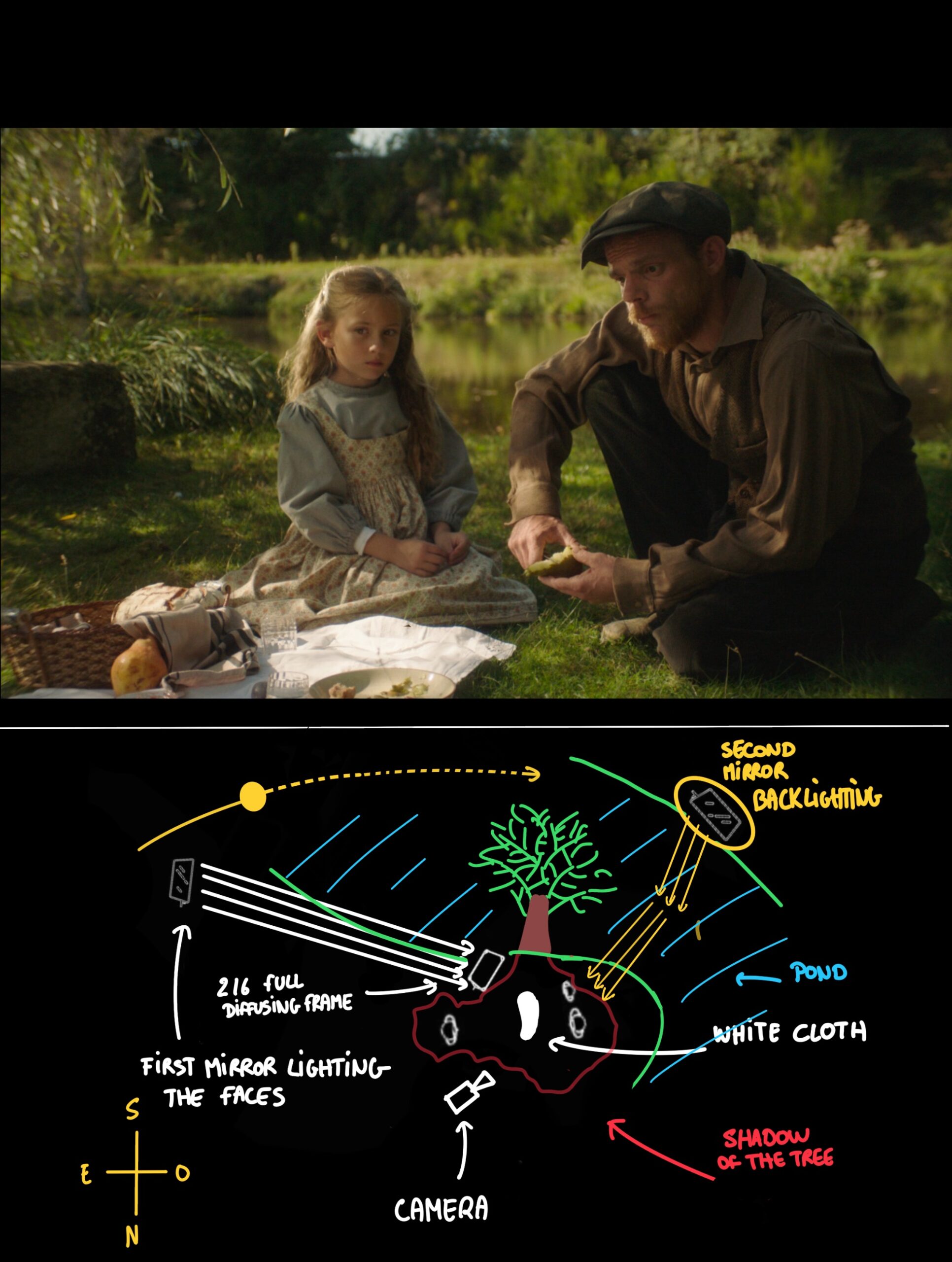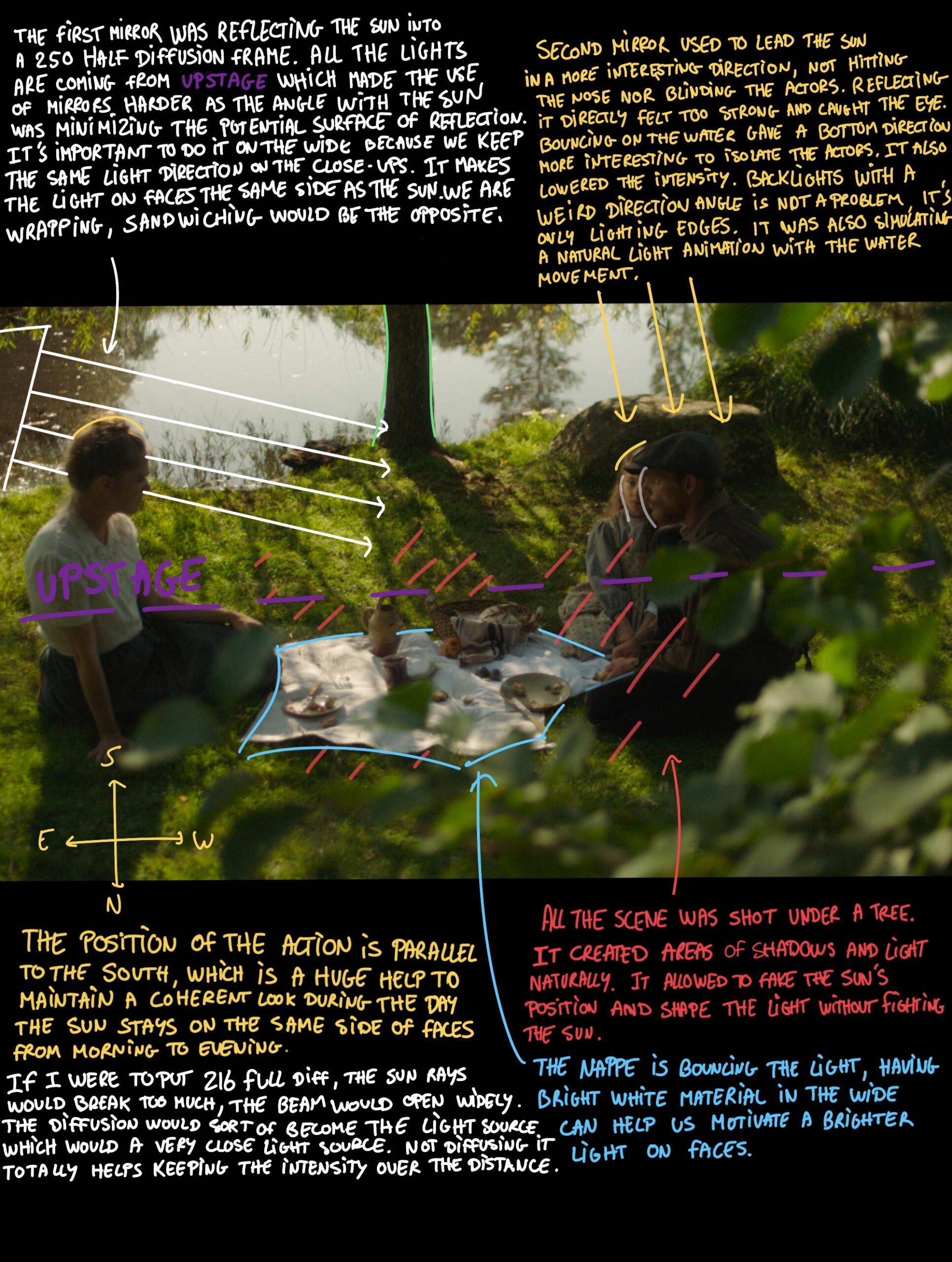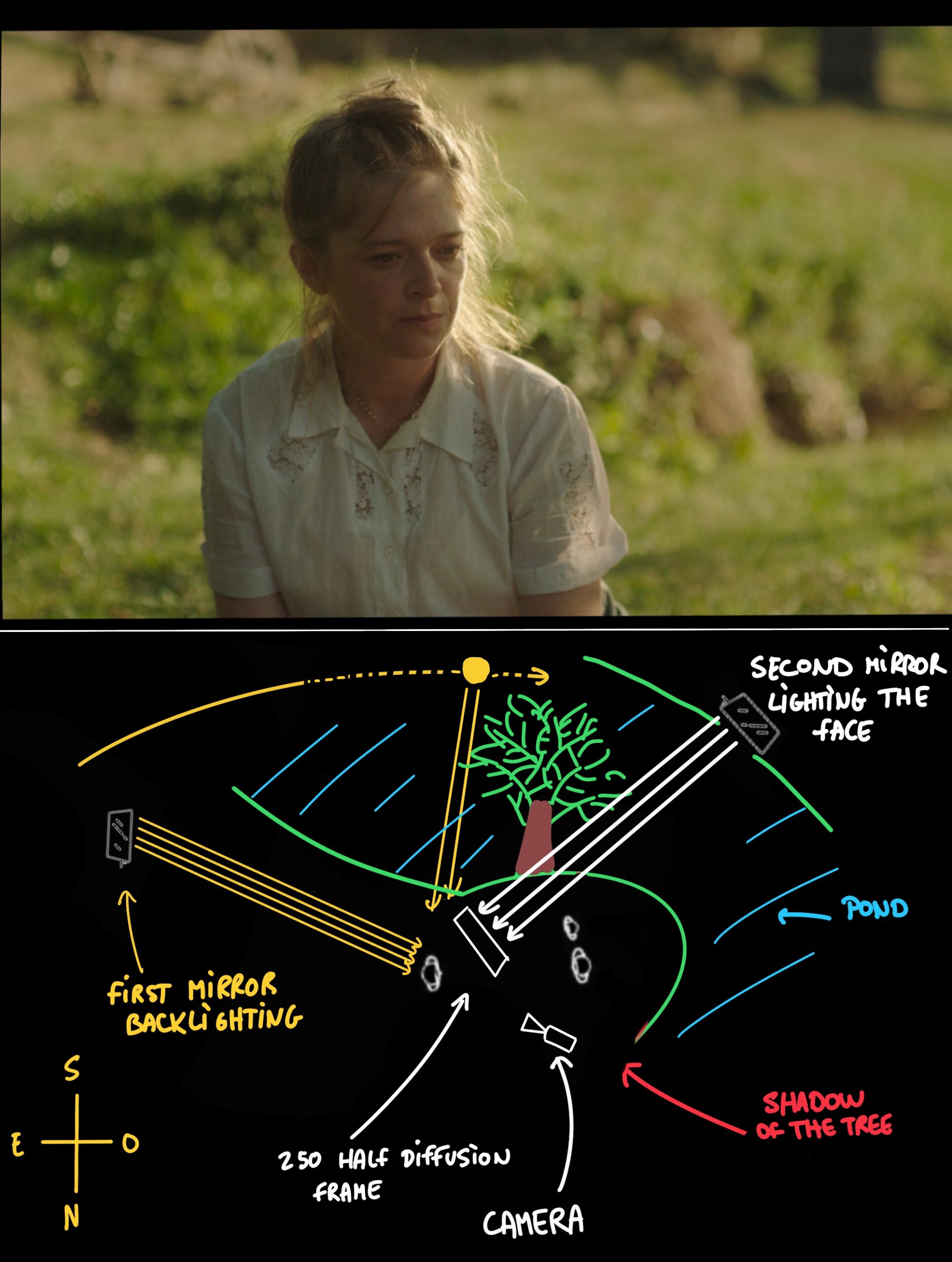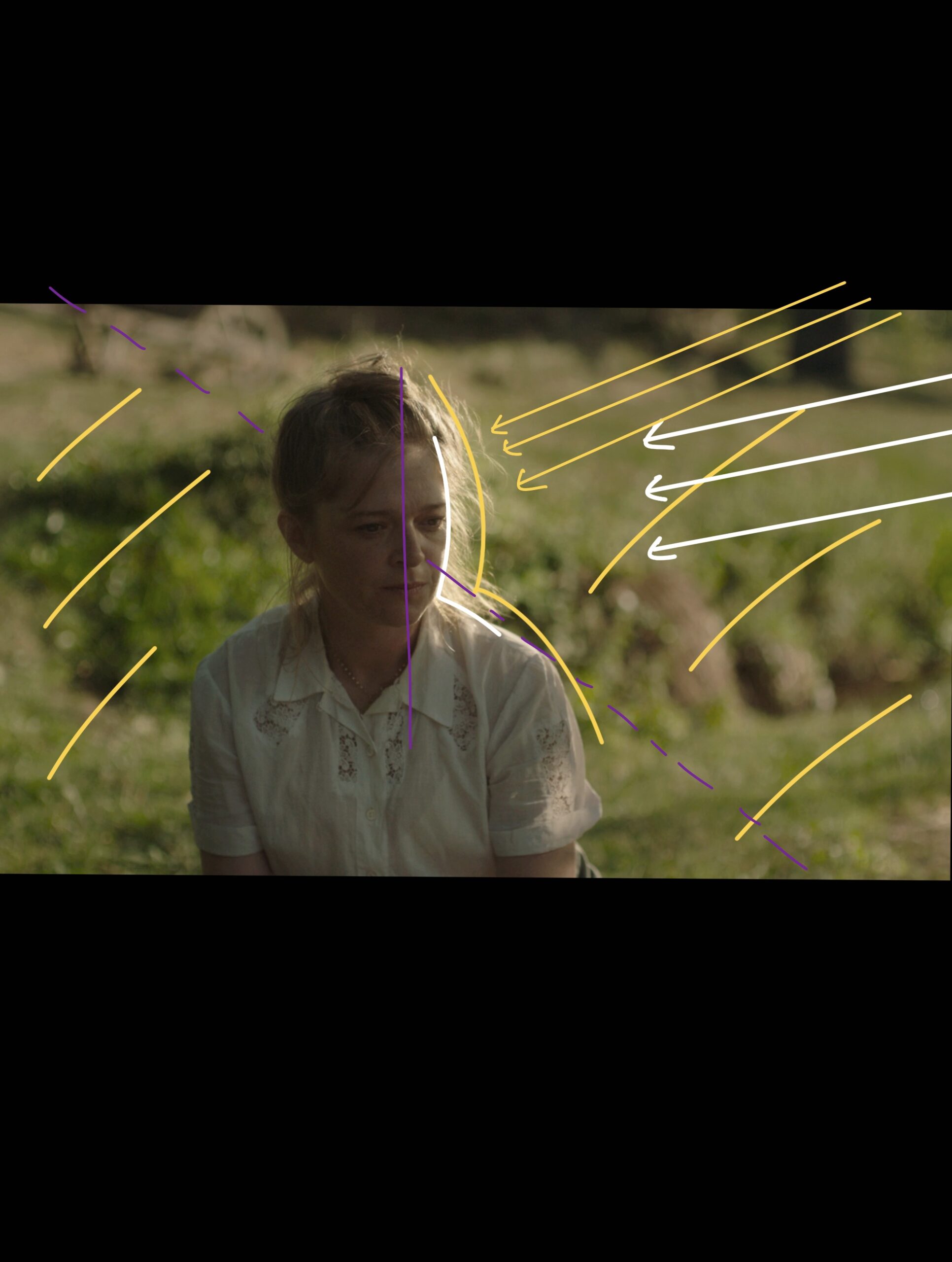Transcription
Top left: The first mirror was reflecting the sun into a 250 half-diffusion frame. All the lights are coming from upstage, which made the use of mirrors harder as the angle with the sun was minimizing the potential surface of reflection. It’s important to do it on the wide because we keep the same light direction on the close-ups. Yes. It makes the light on faces the same side as the sun. We are wrapping. Sandwiching would be the opposite.
Top right: Second mirror used to lead the sun in a more interesting direction, not hitting the nose nor blinding the actors. Reflecting it directly felt too strong and caught the eye. Bouncing on the water gave a bottom direction more interesting to isolate the actors. It also lowered the intensity. Backlights with a weird direction angle is not a problem. It’s only lighting edges. It was also simulating a natural light animation with the water movement.
Bottom left: The position of the action is parallel to the south, which is a huge help to maintain a coherent look during the day. The sun stays on the same side of faces from morning to evening.
If I were to put 216 full diff, the sun rays would break too much, the beam would open widely. The diffusion would sort of become the light source, which would be a very close light source. Not diffusing it totally helps keeping the intensity over the distance.
Bottom right: All the scene was shot under a tree. It created areas of shadows and light naturally. It allowed to fake the sun’s position and shape the light without fighting the sun.
The nappe is bouncing the light, having bright white material in the wide can help us motivate a brighter light on faces.




